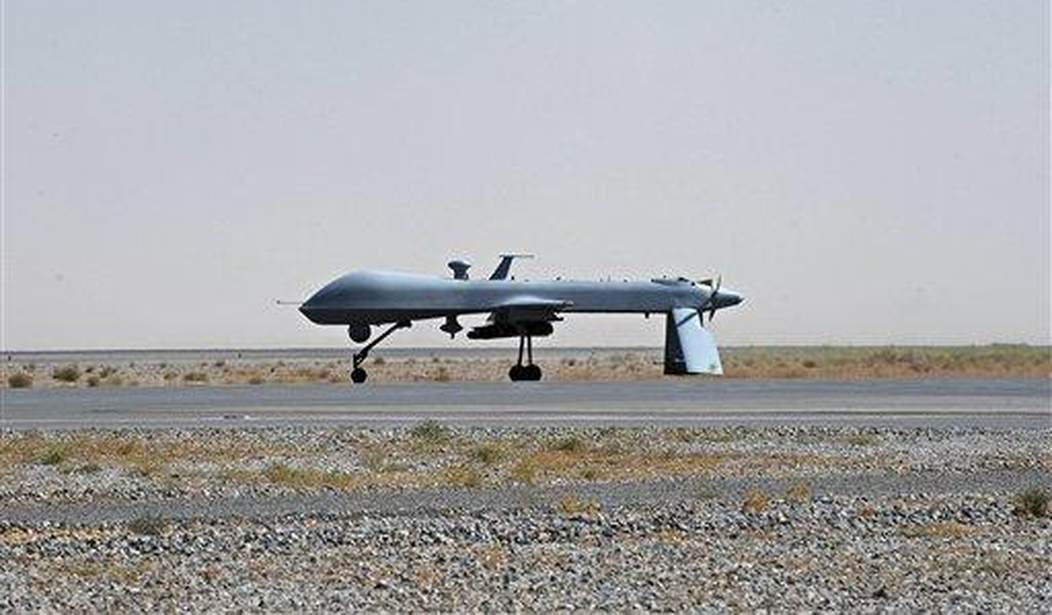Despite the public expectation that the war in Afghanistan is over, it may only be changing form. Even before his retreat from Kabul turned into a shambles, Joe Biden was preparing to pivot to the strategy of waging low-intensity warfare from “over the horizon”. NPR wrote in May 2021: “Right now, ‘over the horizon’ is more a fuzzy concept than a polished military plan.” The Biden plan — before it fell apart — was to use air assets like drones to supplement the now-defunct Afghan air force with intelligence-driven precision strikes.
“The key will be the Afghan Air Force.” However, the Afghan air force uses U.S. aircraft that are maintained by a large contingent of U.S. civilian contractors. Most, if not all, of those contractors are expected to leave when the U.S. military forces pull out.
This approach always had problems for landlocked Afghanistan. The chief limiting factor was the absence of any nearby U.S. airbases from which to stage drones. “The closest existing U.S. bases are in the Gulf region, including an air base in Qatar. And that’s a long way from Afghanistan,” the article added.
“So maybe you get some drones flying from there,” Petraeus said, adding, “that’s a long flight. For a drone that can take six to eight hours.”
So great are the time and distance challenges that Joe Biden even tried to get Putin to allow U.S. airbases in Russian Central Asia. The WSJ reported that Putin rejected the request at a summit with Biden.
Russian President Vladimir Putin, during a June 16 summit meeting with President Biden, objected to any role for American forces in Central Asian countries, senior U.S. and Russian officials said, undercutting the U.S. military’s efforts to act against new terrorist dangers after its Afghanistan withdrawal. The previously unreported exchange between the U.S. and Russian leaders has complicated the U.S. military’s options for basing drones and other counterterrorism forces in countries bordering landlocked Afghanistan.
Even more troubling, the U.S. does not currently possess counter-terrorist drones that can fly over the countries around Afghanistan undetected nor even assuredly survive against the new, American-equipped Taliban air force.
Marine Corps Gen. Kenneth McKenzie, who oversees U.S. operations in the Middle East as head of U.S. Central Command, told lawmakers in April that the MQ-9 “is not viable” in a high-end fight, including against some of the threats that could be posed by adversaries operating in CENTCOM’s area of responsibility in the near future.
The services are trying to replace their current drone fleet. “We are trying to divest ourselves of the ISR [intelligence, surveillance and reconnaissance] that is not particularly useful against a Russia or a China or even [the] dense air defense systems of an Iran or a North Korea, and invest in those ISR systems that do have penetration capability,” Army Gen. Mark Milley, the chairman of the Joint Chiefs of Staff, told lawmakers in a March 2020 hearing. The U.S. might have a platform that can strike targets in landlocked Afghanistan from “over the horizon” In the long run, but in the near term it will be challenged.
By contrast, the terrorists, principally Iranian proxies, have already developed their own cheap, penetrating over-the-horizon attack systems. “By using an unconventional long range strike capability, the [Iran backed] Houthi have consistently demonstrated an ability to penetrate modern air defenses and achieve strategic effects despite being overmatched in technology, manpower and funding” by the Saudi-led coalition.
One Way Attack (OWA) Unmanned Aerial Vehicles (UAVs) have proven to be a low cost, high payoff option to produce direct and in-direct effects. …Analysis of recent UAV employment in the Syrian and Nagorno-Karabakh conflict has demonstrated the significant asymmetric advantage to be gained at the tactical level.
These one-way attack drones, due to their small size, low altitude, and swarm nature recently took out 50% of Saudi Arabia’s oil output against the best Western air defenses the Kingdom could buy.
The highest profile and successful attack occurred on 14 September 2019, targeting the ARMACO facility in Abqaiq. … The attack utilized a combination of up to 25 OWA UAVs and ballistic missiles, and disrupted 50% of Saudi’s oil output and 6% of global supply. In the aftermath of the attack the Houthi claimed responsibility; however, the US blamed Iran for launching the strike. Regardless of the point of origin, the ranges are impressive with the facility being approx. 800km from launch locations in Yemen and 600km from launch locations in Iran. … To compare this …the US M142 HIMARS … has a maximum range of 300km.
The air defences surrounding the facility were extensive. The Saudi military had US Patriot Missiles, SkyGuard short range air defense (based on Oerlikon 35mm cannon) and French Shahine short range missile … it appears none were able to intercept any of the UAVs or missiles. Small arms were also ineffective, likely because of the large number of OWA UAVs and short warning time overwhelmed the defenders.
Additional long range strikes occurred in June 2020 against King Khalid Airport and the Defence Ministry in Riyadh. As recently as Feb 2021, the Abha International Airport was struck.
Perhaps even more worrisome is that these OWA “kamikaze” drones can now hit the wheelhouses of moving ships at sea. USNI wrote in early August:
A one-way, explosive-laden drone made in Iran attacked an Israeli-operated merchant tanker last week off the coast of Oman, U.S. Central Command said on Friday.
The delta-wing drone, similar in design to long-range unidentified, unmanned “kamikaze” drones developed for the Iranian Revolutionary Guard Corps, flew into the pilothouse of the Merchant tanker Mercer Street on July 30, killing two crewmembers, according to a report from CENTCOM…
A Navy Explosive Ordnance Disposal team that embarked Mercer Street from USS Ronald Reagan (CVN-76) after the fatal attack recovered pieces of a drone from two earlier failed attempts to attack the merchant tanker. They matched a drone that the IRGC debuted publicly earlier this year as part of their Great Prophet exercise series and were thought to be used in Sept. 14, 2019, attacks on the Saudi Arabian Aramco oil fields. Yemen-based Houthi rebels claimed responsibility for the attacks on Abqaiq and Khurais. However, U.S. and Saudi intelligence officials believed trrrhe attacks originated in Iran, The Wall Street Journal reported.
Joe Biden’s implied assurance of safety in “over the horizon” counterinsurgency is a false one. It is merely the doorway into another domain of warfare—one, moreover, in which Biden must depend on targeting information from Afghan assets who now have no reason to trust him. That’s his Plan B. May it have better luck than Plan A.
Books: Consciousness and the Universe: Quantum Physics, Evolution, Brain & Mind. Is consciousness an epiphenomenal happenstance of this particular universe? Or does the very concept of a universe depend upon its presence? Does consciousness merely perceive reality, or does reality depend upon it? Did consciousness simply emerge as an effect of evolution? Or was it, in some sense, always “out there” in the world?










Join the conversation as a VIP Member